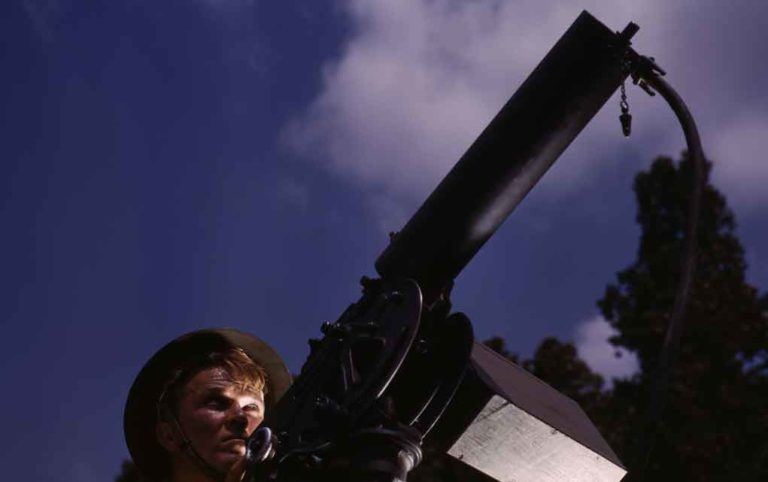
John M. Browning is perhaps most widely known for his sporting arms and handguns, but the firearms design genius churned out his fair share of wicked Browning machine guns.
What were the most-famous Browning machine guns?
- Colt-Browning M1895
- Browning M1917
- M1918 Browning Automatic Rifle (B.A.R.)
- Browning M1919
- M2 Browning
- M4 37mm Auto Cannon
Since an unnamed Chinese fellow concocted gunpowder in the 9th Century, there has been a litany of gentlemen who have conjured up ingenious methods of launching projectiles with it. But, by all accounts, nearly everyone pales in comparison to John M. Browning.
Browning was the wellspring from which modern firearms design flowed. Prolific, the son of a gunsmith (an innovator in his own right) closed life with nearly 150 gun and gun-related patents to his name. And as is plain as a shotgun blast, his ideas were enduring and industry defining. One need only consider his perfection of the locked-breech action to truly appreciate his continuing influence on firearms.
Browning is perhaps best known today for his sporting arms and handguns that are commonplace in most shooters' arsenals. A little less know for many, except for museum curators and U.S. Military veterans, is his impact on a bit heavier class of firearms — machine guns. But, as would be expected from this genius, his fingerprints are all over these vital tools. So, here’s a look at these innovative weapons that have played their role in winning America and her allies’ wars, and vaulting Browning to the status of firearms icon.
Colt-Browning M1895
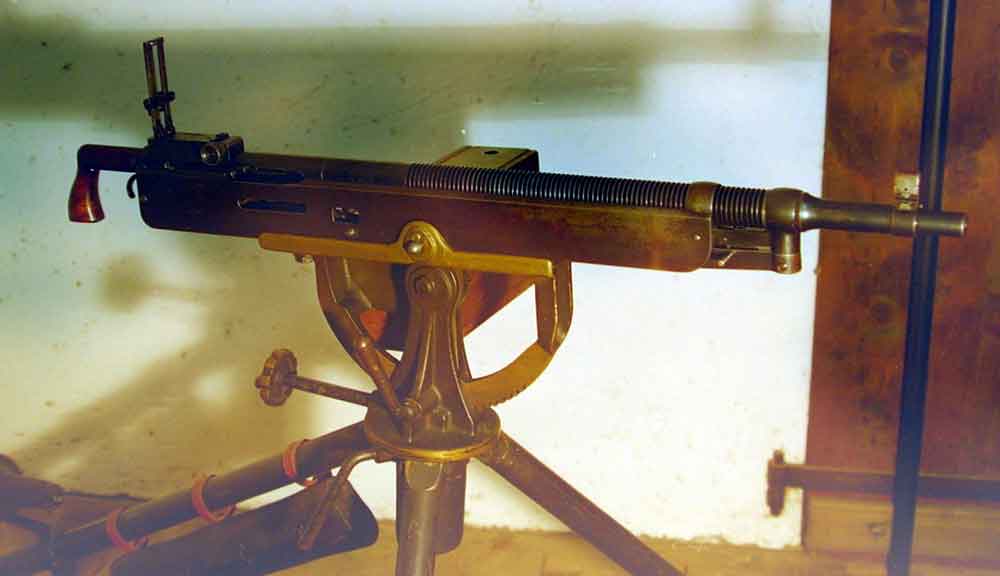
The lever-action design is typically associated with repeaters. But leave it to Browning to apply this concept to a fully automatic machine gun. The result was the M1895, which acquired the nickname “the potato digger” due to the actuation of the swinging lever at the fore of the gun.
Strange as it appears today, it was revolutionary for its time, because it was the first gas-operated machine gun and the first adopted by the U.S. Military. And able to strip off 400 rounds per minute from a belt, the air-cooled gun gave the U.S. Military a decisive edge in some late 19th- early 20th-Century battles.
The M1895 served through World War I, but was quite dated at that point, especially compared to other machine guns making their appearances in the European trenches. And, it always was a bit hamstrung by its own unique design. For the gun to cycle, it needed clearance for the lever to operate, which required a higher profile for its operator. This, for obvious reasons, was not ideal.
Browning M1917 Machine Gun

Built for sustained fire, from a fixed position, to support infantry, the M1917 was the ideal weapon for World War I. However, Browning’s heavy machine gun saw somewhat limited action in the Great War, due to production delays. But its next iteration — the M1917A1 — was a mainstay for U.S. Forces all the way through the Korean War.
Able to lay down 600 rounds per minute of continuous fire, it’s understandable why the machine gun endured. But as time wore on, and battle tactics became more mobile, the water-cooled lead slinger displayed a major flaw — its heft. With its water jacket filled, the heavy machine gun lived up to its classification, weighting in at a cumbersome 37 pounds. Its base added around another 50. It's easy to deduce that it was less than ideal for storming beaches or patrol duties.
Despite this shortcoming, the M1917 might be among the most important Browning machine guns. Its short-recoil operation, two-piece firing pin and buffer became the foundation of lighter, more mobile and arguably more vital Browning machine guns to come.
M1918 Browning Automatic Rifle (B.A.R.)

There is just something nasty about the B.A.R. Guess that goes with the territory for any rifle that can pitch .30-caliber bullets to the tune of 500 per minute almost anywhere that volume was needed. Born into World War I, it saw limited action in the first great European conflict. It was the Second World War that galvanized its legendary status.
The select-fire rifle was essentially used as a squad automatic weapon, supporting infantry soldiers armed with the M1 Garand. And while it proved adept at this role, providing enough firepower to pin an enemy down, it did have a few chinks in its armor.
The first was its weight, which exceeded 20 pounds when outfitted with a bipod and other doodads. U.S. G.I.’s fixed this by stripping down the BAR to its barest essentials, like Browning had intended.
The long-stroke piston operated rifle’s second issue was capacity. Feeding off 20-round box magazines, B.A.R. teams gave enemies a reprieve — often deadly to their comrades — as they reloaded. This was solved simply enough — more B.A.R. teams per squad and a tactic where one fired while the other reloaded.
Not that soldiers of the Axis powers ever really noticed these problems with the B.A.R., as the automatic rifle was among the most feared weapons of the American arsenal.
Browning M1919

Essentially an iteration of the M1917, the M1919 had one notable and vital difference — an air-cooled barrel. While this did not allow for the sustained firing of its water-cooled forerunner, it gave the machine gun an important weight advantage. The M1919 tipped the scales at 22 pounds and operated off a much lighter base. In turn, it could keep up with the ever-quickening pace of the troops.
The .30-caliber machine gun played an important role for the U.S. during World War II, especially the Pacific Theater, where it was quickly deployed to support troops during amphibious operations. And the M1919 was ubiquitous in the conflict, found mounted on everything from jeeps to the tail guns of bombers.
Despite being capable of firing 700 rounds per minute, the machine gun had one major issue — overheating. Once at a critical temperature, it could ignite an unfired round, then proceed through the entirety of a belt of ammunition, a situation known as a “cook-off.” The cure, controlled bursts of a few rounds when fired, slowed the heating process and kept the gun safe and in the fight.
More than 5 million of the M1919 and its variations were produced and served U.S. Forces all the way through the Vietnam War. Even today, the odd example of this rugged brute still turns up in third-world fights.
M2 Browning

In the pantheon of Browning’s machine guns there’s perhaps none more significant than “Ma Duce.” The .50-caliber heavy machine gun’s service life is a testament to this fact. Designed at the end of World War I, though it saw no action in that conflict, the M2 has been in continuous service ever since.
While the M2 is part of the M1917 family tree, a scaled up version capable of handling the .50 BMG round, it does have a few different design points. Perhaps the most substantial was its oil buffer, a unique feature that allowed strengthening of the gun without increasing its weight.
Ma Deuce’s versatility is what keeps her forever young. The massive .50-caliber has and is used for nearly every conceivable military purpose, from anti-personnel to hard-target interdiction to anti-aircraft to primary and secondary weapons on fighting vehicles. And it has an incredible range of projectiles to send at enemies, giving a heavy machine gunner an astonishing toolbox from which to work.
Incidentally, the M2 at one time also boasted the longest sniper kill ever recorded. A shot from the .50-caliber fitted with optics by Carlos Hathcock in 1967 stood for some 35 years.
M4 37mm Auto Cannon

Easily the largest gun — cannon — John Browning ever saw go into production, the M4 is probably better known in Russia than America. The aircraft gun was mounted in the Bell P-39 Airacobra and P-63 Kingcobra, which the U.S. supplied to the Soviets in World War II as part of the Lend-Lease Act.
Contrary to expectations of a gun that could lob 1-pound armor-piercing rounds, the M4 was not used by the U.S. ally as a tank buster on the Eastern Front. Supplied with only high-explosive rounds for the recoil-operated M4, the Soviets used them only in air-to-air combat — but with great effect.
Though, there where a few complaints about the massive gun. While the M4 could hit like a hickory stick, it held only 30 rounds in its horse-collar belt. And with a rate of fire of 150 rounds per minute, it did not exactly spit fire at enemies. Nevertheless, when the M4 connected, woe to the unlucky pilot and his aircraft.

Next Step: Get your FREE Printable Target Pack
Enhance your shooting precision with our 62 MOA Targets, perfect for rifles and handguns. Crafted in collaboration with Storm Tactical for accuracy and versatility.
Subscribe to the Gun Digest email newsletter and get your downloadable target pack sent straight to your inbox. Stay updated with the latest firearms info in the industry.

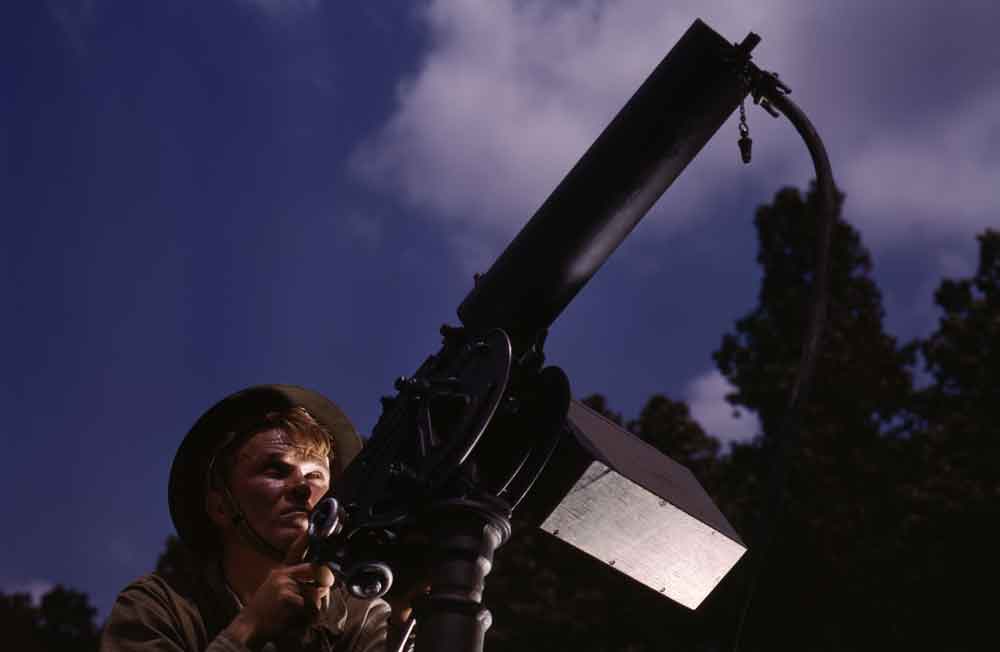


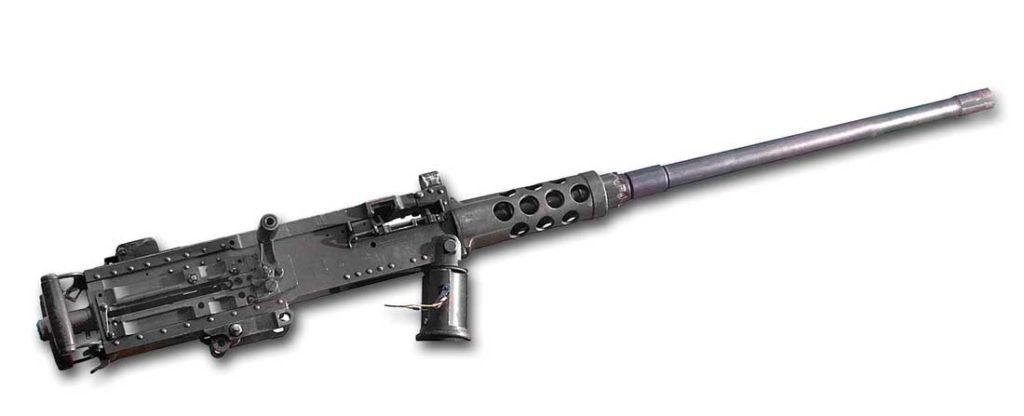
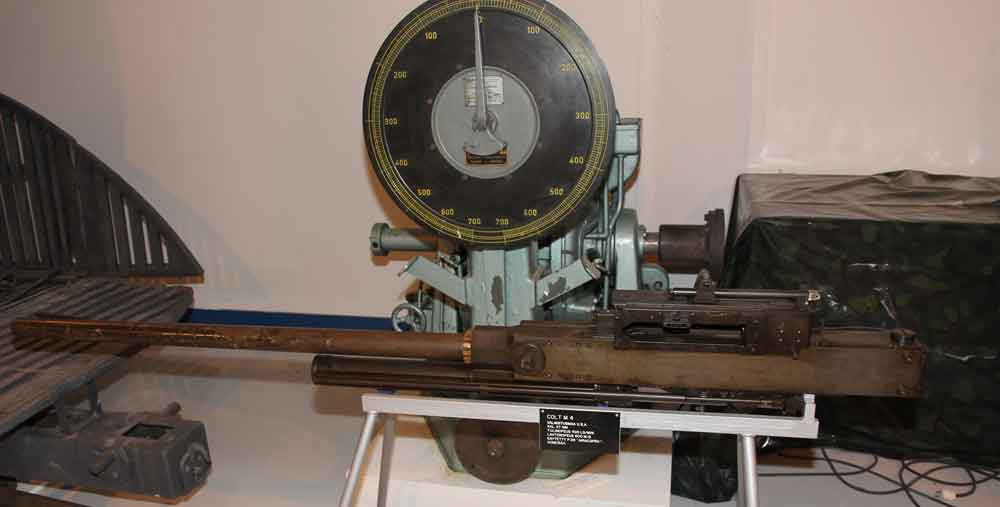
![Best Concealed Carry Guns In 2025 [Field Tested] Wilson Combat EDC X9S 1](https://gundigest.com/wp-content/uploads/Wilson-Combat-EDC-X9S-1-324x160.jpg)


![Best 9mm Carbine: Affordable PCCs [Tested] Ruger Carbine Shooting](https://gundigest.com/wp-content/uploads/Ruger-Carbine-Shooting-100x70.jpg)
![Best AR-15: Top Options Available Today [Field Tested] Harrington and Richardson PSA XM177E2 feature](https://gundigest.com/wp-content/uploads/Harrington-and-Richardson-PSA-XM177E2-feature-100x70.jpg)
